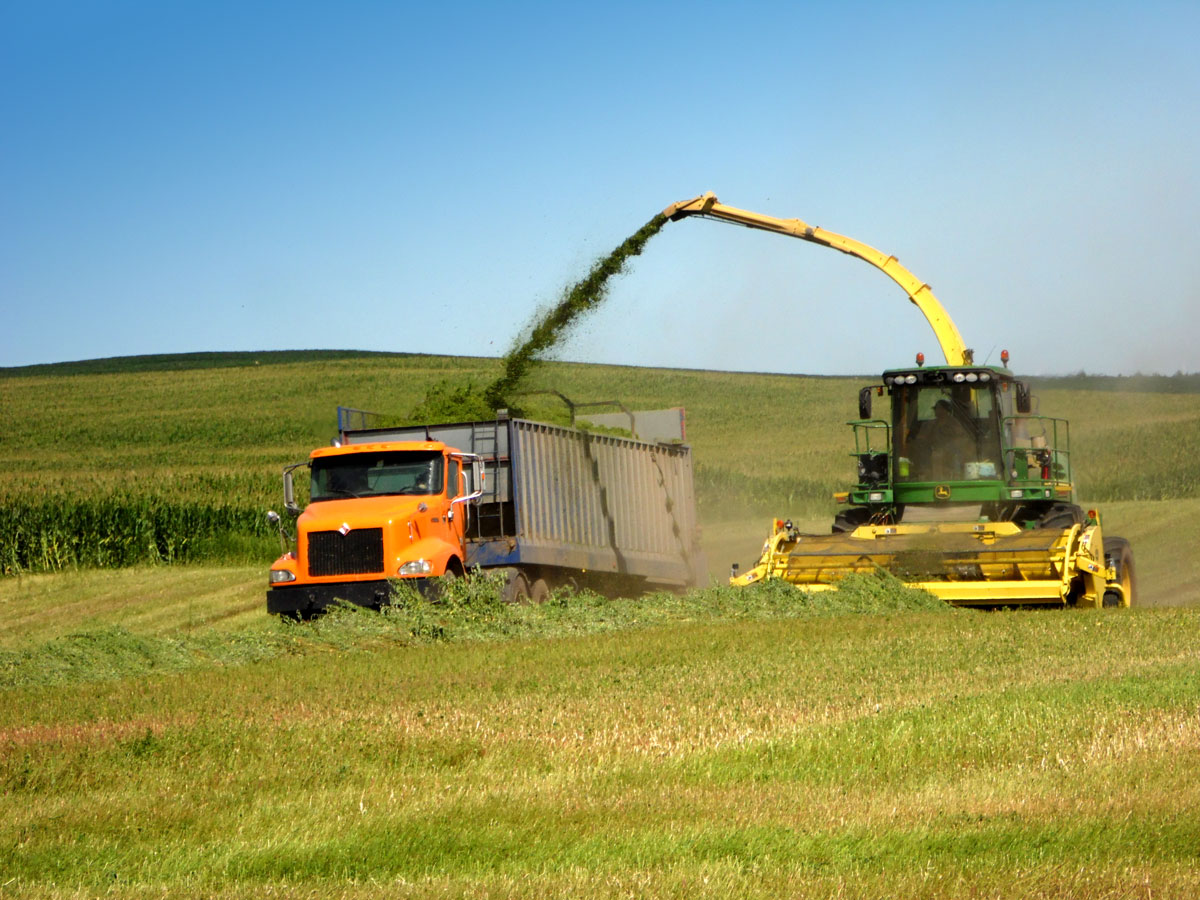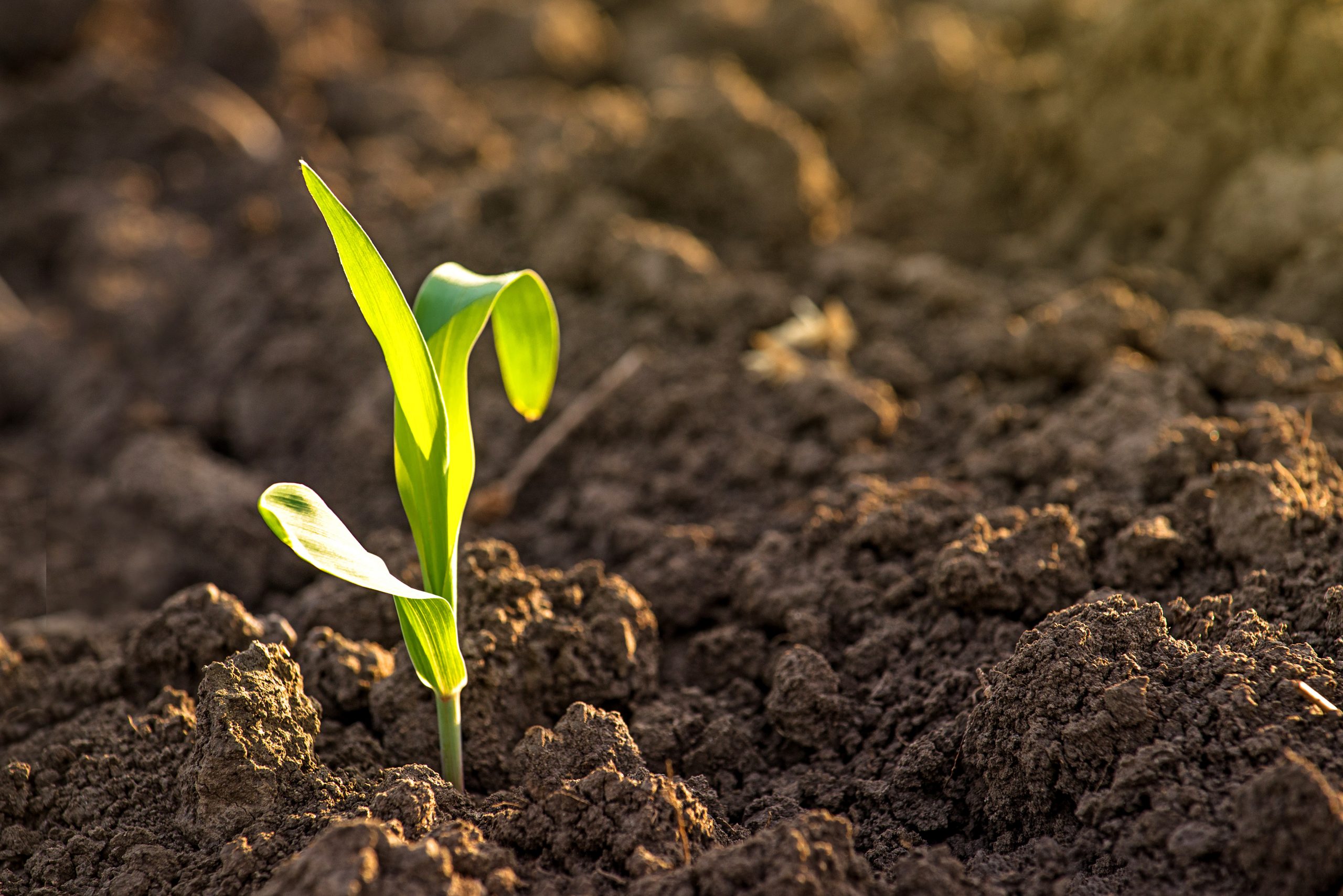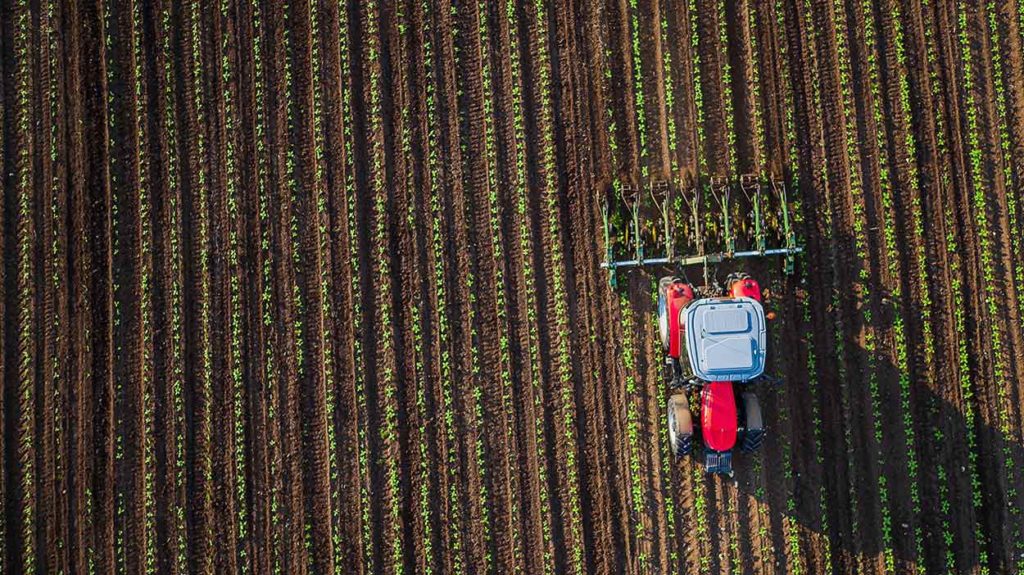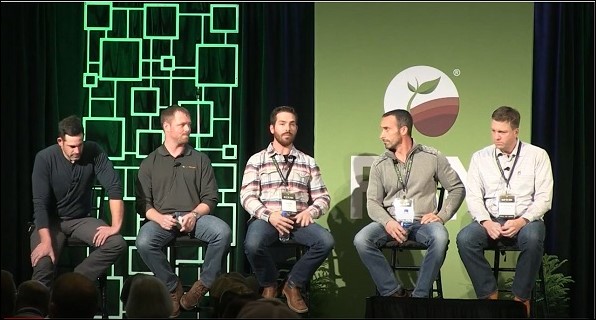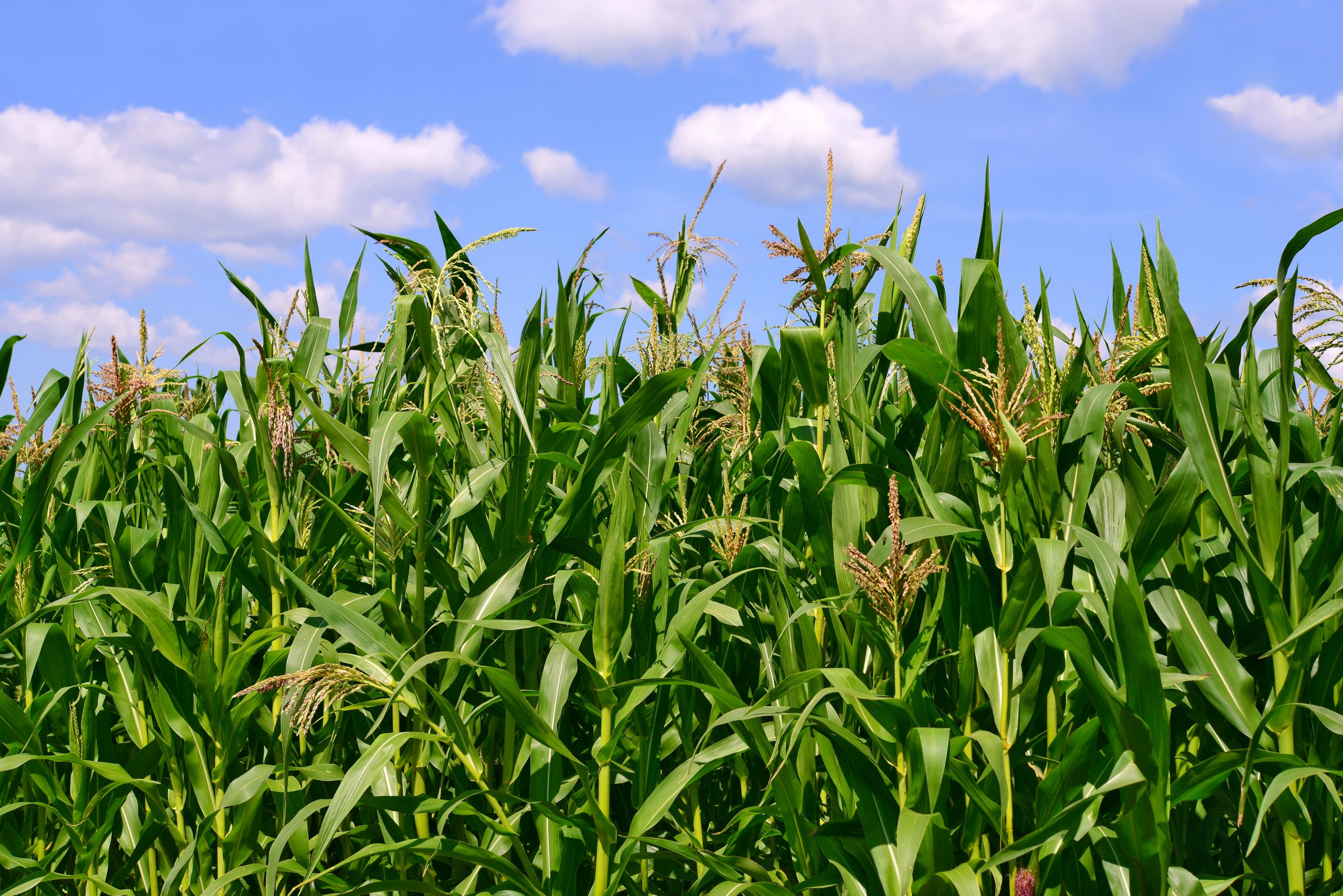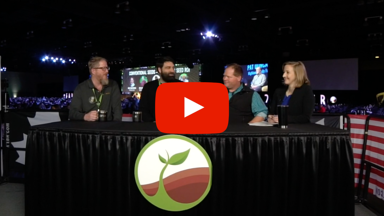- Published On: May 4, 2021
- Author: Steve Sinkula
To become an organic farmer, you need to complete the organic transition period.
Unfortunately, that’s a financial barrier for many farmers. Why? Because unless you have some hidden acres, you’re growing crops organically for 36 months while selling them at commodity prices. But with the right loan, plan, and mindset, you can use this time to set you and your family farm up for long-term success.
Here are six tips to help ensure your transition process is a smart investment in your future.
1. Remember Your “Why“
What are your reasons for going organic?
Profitability is probably on your list. But maybe you also want to decrease your dependency on large ag corporations. Or diversify your income streams. Or maybe you want to be more sustainable so your grandchildren can one day take over the operation.
Whatever has prompted you to make the move to organic, know it and know it well. The organic transition period isn’t an easy phase, but it’s necessary to get you where you want to go. So before you get started, make sure your goals are clearly defined. That will help sustain you in challenging times so you can reach the finish line.
2. Look at the organic transition period as an investment, not an expense
The transition process can feel like a costly endeavor. You’re probably going to need to buy some new equipment. You’re probably going to see lower yields, and you’ll be selling the crop at conventional prices. And if you grow a crop like alfalfa, you may not see a return until the second year.
That’s why it’s important to view this period as an investment, rather than an expense. Every decision you make during this time should be focused on your ongoing financial success once you’re certified.
It’s important to view the organic transition period as an investment, not an expense. Every decision you make during this time should be focused on your ongoing financial success once you’re certified.
Think of all the inputs you purchase for your conventional crops and the returns you typically see. With organic, the return on every expense is amplified:
- Yields may be lower now, but soon every bushel you grow could be double its worth in conventional prices.
- That new tillage equipment may cost you now, but keeping your fields as weed-free as possible will help support strong organic yields.
- You may not make as much on alfalfa, but it can build up nitrogen in the soil for your first-year organic corn and save on fertility costs.
You also need to view the organic transition period as an investment of your time and commitment to learning. This is the opportunity to gain the experience and knowledge you need to do organics well. So when you do achieve certification, you’ll reap the profits of all your hard work.
3. Invest in the right things
We’ve talked before about how there’s a “Goldilocks” acreage for transitioning. That’s not too many but not too little, and it’s unique to every operation. The same applies to how much you need to invest in the transition.
The right amount for you will depend on a variety of factors, including your:
- Execution capacity
- Soil health and soil fertility
- Ability to control weeds
- Total acres you decide to transition over the long-term
Instead of focusing on specific numbers, you’re better off making sure you’re investing in the right things.
We see a lot of farmers stuck in a conventional mindset and they try to do as many corn and soybean acres as possible. So they invest in the biggest equipment possible for those two crops. But they would be better off investing in a crop like alfalfa that would result in better agronomic, operational, and economic success.
4. Create a plan based on reality, not aspirations
Sticking with conventional crop rotations is common mistake. Too many farmers believe they can only succeed with corn and soybeans. They also tend to overestimate their yield expectations while underestimating what it takes to execute.
That’s why you need to plan based on reality and not aspiration.
When we work with farmers, we try to capitalize on the unique aspects of their farm while mitigating the downsides. We do this by starting with a farmer’s region, as that determines their market opportunities. Then we examine which fields might work well in organic. Finally, we work together to honestly understand their strengths and weaknesses.
It’s a challenging task to take on alone. Creating a plan is an iterative process that requires triangulating a lot of data points. And it’s hard to be critical of assumptions you’re making about your future organic production without a partner to offer a reality check. You really need to pressure test your thinking in order to know what’s possible on your farm.
5. Present a strong plan to your lender
The good news is that once you’ve create a strong transition plan, you can use it to win financial support.
So what do you need to include in your plan that will help you secure a loan?
You need numbers, but more importantly, you need data to back up those numbers. We see a lot of farmers just drop figures into an Excel sheet without understanding where they came from or how they can change throughout the year. You need to know how you developed those forecasts and what influenced them.
Your plan should also emphasize the long-term value organics will bring to your operation. Present a longer plan, ideally 5-7 years out, and show them what that long-term profitability looks like.
The best plans acknowledge that you don’t expect to get everything right in the first season and that you’ll build on your success over time. Your plan should also outline how you’ll add more acres at a pace that doesn’t cause you to overinvest.
Creating such a plan will not only help win your lender’s support, but it’ll show them what a valuable customer you’ll be to them moving forward.
6. Tap experts for support and guidance
There’s a learning curve to organic farming. From killing weeds without chemicals to selling in an opaque marketplace, it’s not like conventional. So why go it alone when you can learn from others who have been there, done that?
There’s a wide range of resources you can tap into including:
- University research. Good for garnering insights into new practices and techniques.
- State-based organic nonprofits. They often hold regional conferences where you can learn, grow your network and meet companies in the organic market space.
- Seed companies. They understand what varieties work best in certain regions.
- Other organic farmers. Meet them at tradeshows, field days, and on-line connections.
However, it can take a lot of time and effort to align to these resources and build a network. You’re also not guaranteed constant, year-round support. That’s where AgriSecure comes in!
AgriSecure can help
AgriSecure was founded by people with first-hand experience of large-scale, row-crop organic farming. And our focus is to help you succeed in the transition period and beyond. In addition to our on-farm experience, we have a network to other farmers and industry connections. And our MyFarm platform allows you to build plans based on real data, not anecdotal evidence or assumptions.
So if you’re looking for help with the organic transition period and want to succeed economically, we’re ready to be your trusted partner. Contact us today for a free consultation call. In the meantime, download our free organic transition playbook for more tips on how to succeed with the transition.
By Steve Sinkula, AgriSecure Founder and CEO and Bryce Irlbeck, AgriSecure Founder and Owner of B&B Irlbeck Farms
Related Articles
-
5 Steps for a Strong Transition to Organic Farming
Is your family farm struggling to stay profitable? Are you worried the only way to stay in business is to increase your acreage? It’s time to put your worries aside. You can transition to organic row crop farming and take control of your profits. With organics, you can improve your farm’s bottom line. You won’t […]
-
Organic Certification. Done by Sep 2020. Check!
The pandemic turned “normal” upside down in 2020, but it didn’t stop AgriSecure. Our members got their organic certification completed. On time. COVID-19 caused communication delays. It created confusion across the nation. Still, all our members had their organic certification paperwork done by September. Why? For one, row crop farmers gained from our expertise in […]
-
Organic Transition Provides “Peace of Mind” and an Edge
Not so long ago, Todd Grohs realized he had a problem. He was doing the budget for his 5,000-acre farm in Wessington Spring, S.D., and the numbers didn’t look good. “I said, ‘I’ve got an option here. If I stay doing what I’m doing, in three to four years I’ll have all of my equity […]
-
5 Steps for Financing the Transition to Organics
Profits. They’re one of the primary reasons farmers decide to move into organic production. Financing the transition to organics, though, can be one of your biggest hurdles. That’s why the support of a banker or ag lender can be a lifeline for farmers looking to get into organics. The right backing helps you build an […]
-
Transitioning to Organics? Avoid These 5 Pitfalls.
There are many reasons to be interested in transitioning to organics. Premiums are one of them. Prices for organic row crops can be two to three times those for conventional, with the organic corn market trading at an average $9+ per bushel over the last decade. The key to realizing these benefits is getting off […]
-
Consider Organic Farming? Yes.
With so much economic uncertainty caused by the COVID-19 pandemic, you may be wondering: Is now the right time to transition into organic crop production? Is this the right time to increase the number of organic acres you’re already farming? My answer, yes. Current market conditions, falling commodity prices for conventional crops and somewhat lower […]
-
80 Million Millennials Can’t Be Wrong: Farmer Panel
80 million millennials are a part of the driving force behind the rapid growth of organic food demand. So why aren’t more farmers transitioning into a system that sees premiums of 2x over conventional and profitable margins? In a panel that took place at FBN’s Farmer2Farmer V event, AgriSecure co-founder and organic farmer Bryce Irlbeck […]
-
Organic Production? Get this Free Playbook.
Becoming an organic farmer is not a simple task. It requires a 36-month period, known as the transition process, where fields are treated as they would be under organic certification, but without being able to reap the organic premiums. Transitioning can set your organic operation up for success or struggles, which is why AgriSecure has […]
-
AgriSecure Shares Transition Tips at Minnesota Organic Conference
AgriSecure account executives Kenn Jenkins and Pete Kapustka will share the company’s perspective on how to manage the transition process into organic production at the 2020 Minnesota Organic Conference. Becoming an organic grower requires a field not having any prohibited substance or genetically modified crops on it for 36 months, and that time period can […]
-
Watch “Going Organic: Crops of the Future”
Thinking of going organic? Wondering what it might look like for your farm in the future? Watch the in-depth discussion between organic farmers J.P. Rhea AgriSecure founder J.P. Rhea, Travis Heide, and Rusty Olson at FBN’s Farmer2Farmer V event to gain insights into the path of organic so that you can make more educated decisions […]
Get in the know
Our newsletter, it’s a quick read. You’ll get industry news plus all the latest organic insights. Who doesn’t want that?




